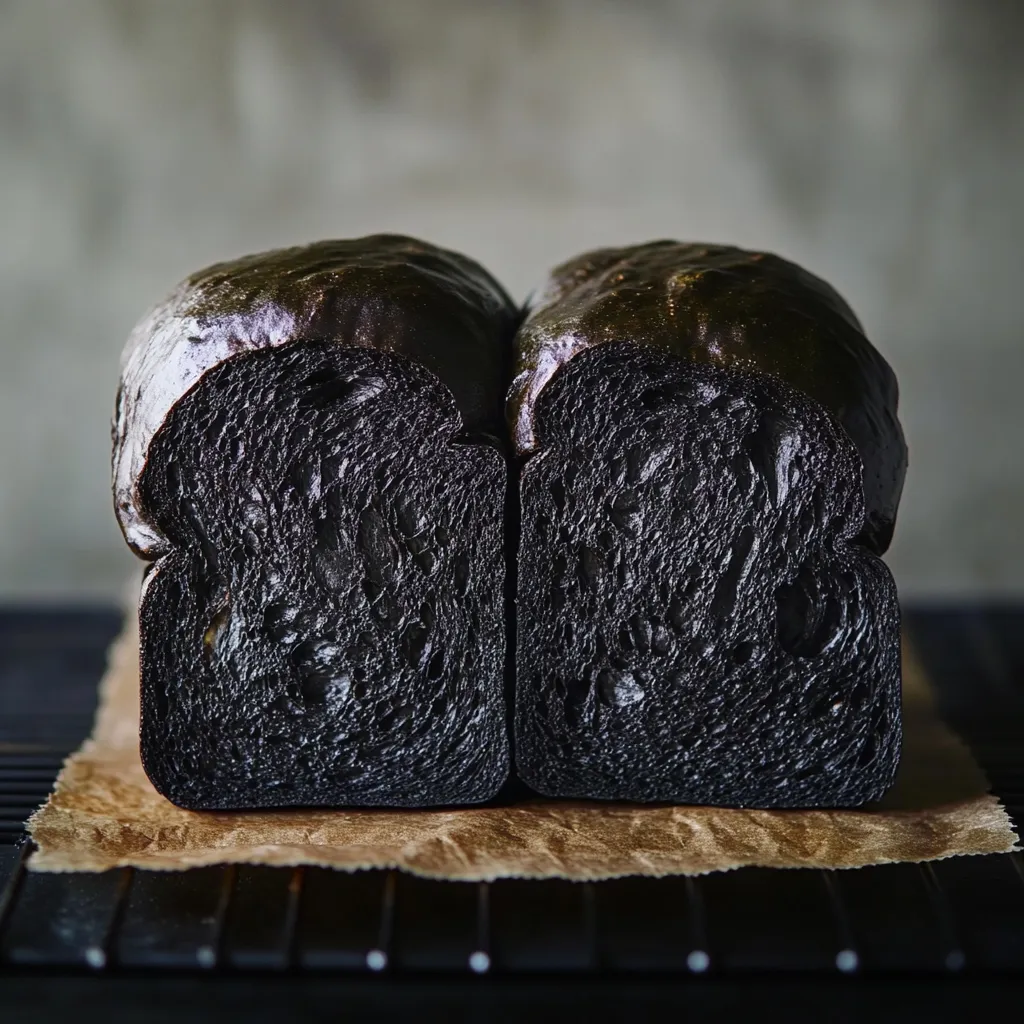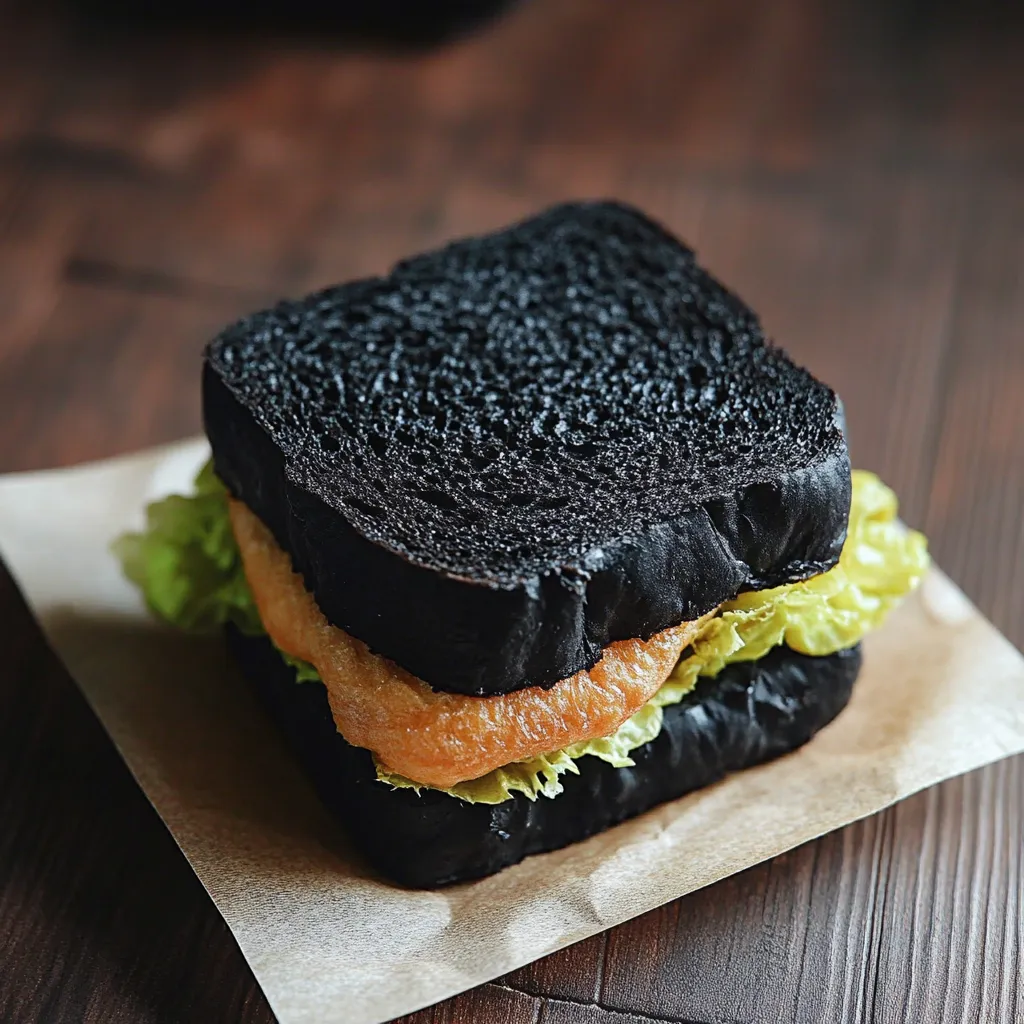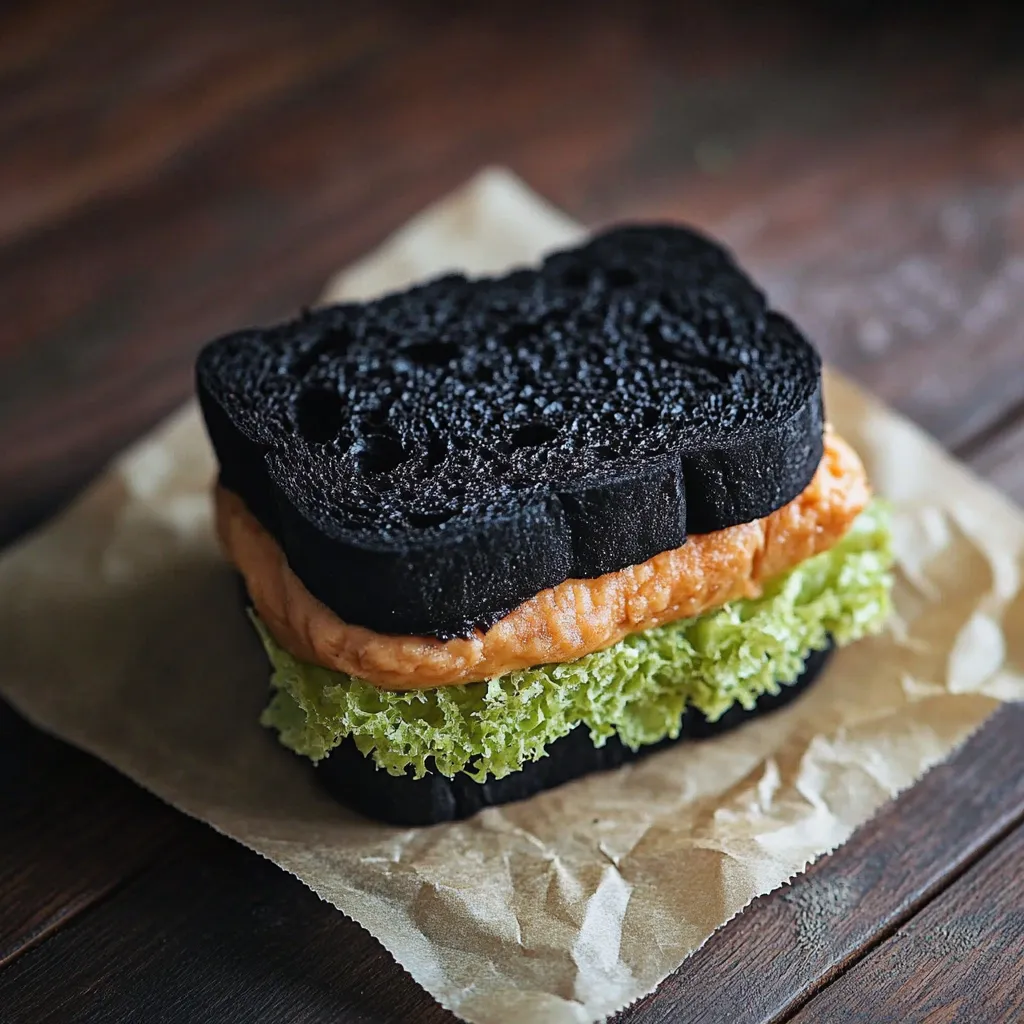 Pin it
Pin it
This striking charcoal bread transforms ordinary sandwiches into showstopping creations with its dramatic black color and exceptionally soft texture. The yudane method creates an incredibly moist, fluffy loaf that stays fresh longer than traditional breads while providing a neutral canvas for both sweet and savory fillings.
I first created this bread when hosting a black and white themed dinner party. My guests were absolutely mesmerized by the dramatic appearance and kept asking for the recipe long after the evening ended.
Ingredients
- High protein bread flour: Essential for developing proper gluten structure that creates that perfect chewy texture with a soft crumb
- Bamboo charcoal powder: The star ingredient that creates the stunning black color while adding subtle detoxifying properties
- Dried instant yeast: Quick acting leavening agent that ensures reliable rising without advance preparation
- Brown sugar: Provides food for the yeast while adding subtle depth of flavor not found with white sugar
- Salt: Enhances flavors and regulates yeast activity for proper fermentation
- Fresh milk: Creates a tender crumb and adds richness to the bread
- Butter: Adds moisture and improves keeping quality of the finished bread
- Boiling water: For the yudane which gelatinizes the flour starches creating exceptional softness
Step-by-Step Instructions
- Prepare the Yudane:
- Add 60g bread flour to a bowl and pour 55g boiling water over it. Mix thoroughly with a spatula until no dry spots remain. The mixture will be thick and sticky. Cover with plastic wrap pressed directly onto the surface to prevent drying and refrigerate overnight for best results. The hot water essentially cooks some of the starches creating a moister final bread.
- Bring Yudane to Room Temperature:
- Remove yudane from refrigerator 30 minutes before using. This step ensures even incorporation into your final dough. Cold yudane would create uneven mixing and potentially affect yeast activity.
- Mix the Main Dough:
- Place room temperature yudane into your mixing bowl along with 240g bread flour, 3 teaspoons bamboo charcoal powder, 1¼ teaspoons dried instant yeast, 1½ tablespoons brown sugar, 1⅛ teaspoons salt, and 160g fresh milk. Knead for approximately 4 minutes until ingredients are well incorporated but not yet smooth.
- Add Butter and Complete Kneading:
- Add 12g butter and continue kneading for an additional minute until dough becomes smooth, elastic and pulls away from the sides of the bowl. The dough should be slightly tacky but not sticky. The window pane test works well here check if you can stretch a small piece of dough thin enough to see light through without tearing.
- First Proofing:
- Transfer dough to a lightly floured surface and shape into a ball. Place in a warm area covered loosely with plastic wrap or a damp towel. Allow to proof until doubled in size, approximately 45 to 60 minutes depending on room temperature. Proper proofing is crucial for texture development.
- Divide and Pre-shape:
- Gently punch down the proofed dough to release excess gases. Divide into two equal portions and shape each into a ball. Let rest for 10 minutes to allow gluten to relax for easier final shaping.
- Final Shaping:
- Flatten each ball into a long oval shape. Fold one third from the right edge to the middle and press down firmly to seal. Then fold one third from the left edge to the middle, overlapping the previous fold, and press lightly. Roll out slightly and then roll into a tight cylinder shape, ensuring seams are properly sealed.
- Second Proofing and Baking:
- Place shaped dough logs seam side down in an 8×4×4 inch Pullman loaf tin. Allow to proof again for approximately 40 minutes until dough fills about 80% of the tin. Preheat your oven to 190°C during the last 15 minutes of proofing. Bake at 180°C for 25 to 30 minutes until the crust is firm. Cool completely on a rack for at least an hour before slicing.
 Pin it
Pin it
The bamboo charcoal powder is truly my favorite ingredient in this recipe. Beyond creating that stunning black color, it adds subtle earthy notes that complement both sweet and savory fillings beautifully. My niece now insists we make this bread whenever she visits, calling it our "magic bread" because it turns her fingers slightly gray when eating it.
The Science Behind Yudane
The yudane method originated in Japan and involves mixing a portion of the flour with boiling water before incorporating it into the main dough. This process gelatinizes the starches in the flour, allowing them to absorb more water and creating a significantly softer, moister bread with improved shelf life. The pregelatinized starches also provide natural sweetness without additional sugar. While it requires a bit of advance planning, this extra step makes an enormous difference in the final texture of your bread.
Storage and Keeping Quality
This charcoal bread maintains its soft texture for significantly longer than standard homemade breads. Store it in an airtight container at room temperature for up to 4 days without noticeable degradation in quality. For longer storage, slice the completely cooled bread and freeze individual portions with parchment paper between slices. Frozen slices can be toasted directly from frozen or thawed at room temperature for about 30 minutes. The high moisture content from the yudane method means this bread remains remarkably fresh even after freezing and thawing.
Creative Serving Suggestions
The dramatic black color creates endless possibilities for themed foods. Create Halloween sandwiches with orange cheese and vegetables for a striking contrast. Use as the base for colorful rainbow sandwiches where the fillings provide vibrant colors against the black background. For breakfast, the neutral flavor pairs beautifully with fruit preserves or cream cheese for a sophisticated morning treat. My personal favorite is using it for avocado toast where the green avocado looks absolutely stunning against the black bread.
 Pin it
Pin it
This bread is sure to turn heads with its striking appearance and luxurious softness. Enjoy experimenting with flavors and pairings to make it your own!
Frequently Asked Questions
- → What is the yudane method in bread making?
The yudane method is a Japanese bread-making technique that involves mixing boiling water with flour and letting it rest overnight. This process gelatinizes the starches in the flour, resulting in bread with a softer texture, better moisture retention, and longer shelf life.
- → Can I make this bread without bamboo charcoal powder?
Yes, you can omit the bamboo charcoal powder to make regular yudane bread. The bread will have the same soft texture but without the black color. Alternatively, you could substitute with activated charcoal, though the flavor profile might differ slightly.
- → Why is my bread not turning dark enough?
If your bread isn't dark enough, you might need to increase the amount of bamboo charcoal powder. Make sure you're using food-grade bamboo charcoal powder, and consider that different brands may vary in color intensity.
- → Can I prepare the yudane dough the same day?
While overnight refrigeration yields the best results, you can make yudane at least 4 hours before using by leaving it at room temperature. However, the longer you allow the yudane to rest, the better your bread will turn out in terms of texture and flavor.
- → What's the best way to store this bread?
Store the charcoal bread in an airtight container or bread bag at room temperature for up to 3 days. For longer storage, slice the bread and freeze it in a freezer-safe bag for up to 3 months. Thaw slices as needed or toast them directly from frozen.
- → What can I serve with charcoal bread?
Charcoal bread makes striking sandwiches when paired with colorful fillings like smoked salmon, avocado, or bright vegetables. It also works well as toast with eggs for breakfast, or as an accompaniment to soups and salads. The neutral flavor complements both sweet and savory toppings.
